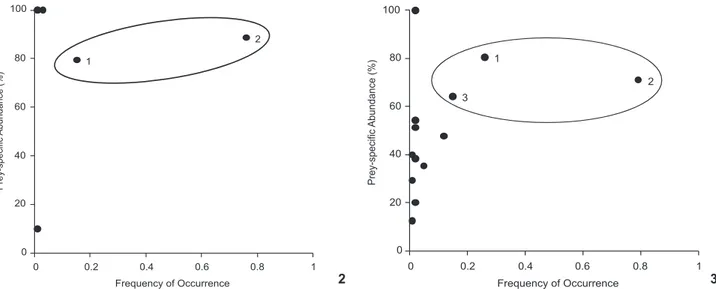Feeding strategy of Menticirrhus americanus and Menticirrhus littoralis (Perciformes: Sciaenidae) juveniles in a sandy beach surf zone of southern Brazil
Texto
Imagem



Documentos relacionados
Based on the results of this study, it can be con- cluded that: There was a force degradation over time in all groups, being greatest on the first day of the ex- periment,
Diante do cenário apresentado, este estudo se propõe a analisar como o mercado automobilístico secundário, também denominado mercado de reposição ou aftermarket, pode ser
Obstetric transition in the World Health Organization Multicountry Survey on Maternal and Newborn Health: exploring pathways for maternal mortality reduction.. Solange da Cruz
Considering the feeding aspects of this species during the formation of the reservatório of Corumbá there were small variations in the param- eters (diet and feeding activity) dealt
Table 3: Number of Menticirrhus littoralis by gender and reproductive status captured each month (June 1997 to May 1998) at Cidreira’s Pier, Rio Grande do Sul, Brazil.. Seasons,
In the Principal Component Analysis, component I, responsible for 25.08% of the variation in the data, is related to the wave height and period and with the morphodynamic state of
A mídia também é tida como o espaço próprio da violação ou como diretamente responsável por ela, tal qual na perspectiva radical de Dworkin e MacKinnon (1997), sobre a
Here we endeavoured to (1) determine the diet and feeding strategy of juveniles of the Remo flounder in a subtropical sandy beach in southern Brazil and (2) to compare the